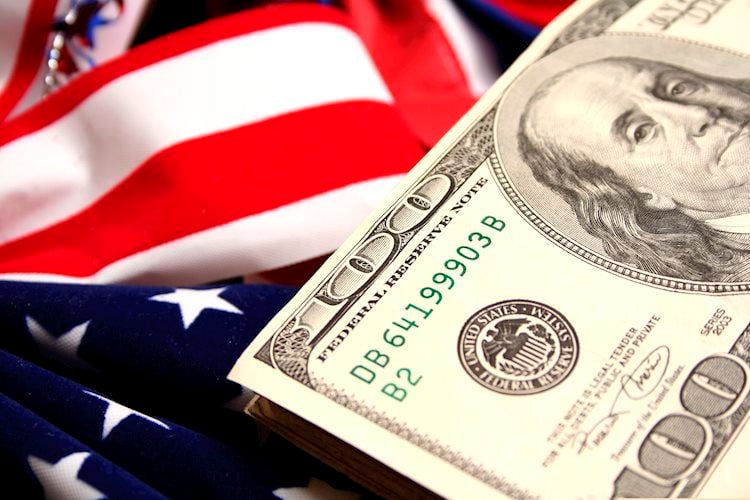- The US Dollar retreats further from its peak performance on Monday.
- Traders brace Fed speakers this Wednesday in a very small economic calendar ahead.
- The US Dollar Index to snap below 104 in search of support.
The US Dollar (USD) is flat for this week and tilted to move into a negative performance ahead of the US opening bell. The effects from the upbeat US Jobs Report and geopolitical tensions – with ceasefire talks evolving in the Gaza region – are starting to favor the Greenback. Hamas has laid out a plan for a 135-day truce in three stages which is now under discussion by all parties.
On the economic front, traders are seeing some confirmation for paring back a bit of US Dollar strength after Minneapolis US Federal Reserve member Neill Kashkari said three rate cuts are appropriate for this year. Three more US Federal Reserve (Fed) members are due to speak later this Wednesday that could move the dial. These speakers are: Adriana Kruger, a member of the Board of Governors, who is speaking near 16:00 GMT, Thomas Barking from the Richmond Fed, near 17:30 and Michelle Bowman, who like Kruger is also a member of the Board of Governors. She is set to speak near 19:00 GMT.
Daily digest market movers: Speakers ahead
- At 12:00 GMT the weekly Mortgage Bankers Applications got released. Previous saw a contraction of 7.2% with this week an uprising of 3.7%.
- Around 13:30, the US Goods and Trade Balance numbers are expected:
- Goods and Services Trade Balance for December went from a revised $-61.9B (previous $-63.2B) to $-62.2B.
- The Goods Trade Balance was showing a $88.5 Billion deficit in the previous report and went in December to $-89.1B.
- Minneapolis Fed member Kashkari said that two to three rate cutes are appropriate for this year.
- As mentioned a few paragraphs above, no less than three Fed speakers will be hitting the wires today, Fed’s Kruger, Barking and Bowman.
- Near 18:00 the US Treasury will allot the always important 10-year Note in the market.
- Equity markets are showing no signs of letting go of this bull run. The earlier losses in the US equity futures have already been pared back with all three major futures trading in the green ahead of the US opening bell.
- The CME Group’s FedWatch Tool is now looking at the March 20th meeting. Expectations for a pause are 78.5%, while 21.5% for a rate cut.
- The benchmark 10-year US Treasury Note trades near 4.11%, off the peak from Monday near 4.17%.
US Dollar Index Technical Analysis: Fed tries to guide markets
The US Dollar Index (DXY) is taking a breather, so it seems, after its rally on Friday and Monday. The Greenback looks to be on its way to being proclaimed King Dollar again, although no real calls are put out there that DXY could pop back to 107. For now the equilibrium looks to be found with the DXY retreating a touch in search of support.
Should the US Dollar Index move higher again, first look for a test at the peak of Monday, near 104.60. That level needs to be broken and is more important than the 100-day SImple Moving Average snap at 104.30. Once broken above that Monday high, the road is open for a jump to 105 with 105.12 as key level to keep an eye on.
The 100-day SMA is clearly the unreliable boyfriend in the rally at the moment. A false break on Monday and no support provided on Tuesday from the moving average opens the door for a bit of a squeeze lower. The first ideal candidate for support is the 200-day SMA near 103.59. Should that give way, look for support from the 55-day SMA near 103 itself.
Fed FAQs
Monetary policy in the US is shaped by the Federal Reserve (Fed). The Fed has two mandates: to achieve price stability and foster full employment. Its primary tool to achieve these goals is by adjusting interest rates.
When prices are rising too quickly and inflation is above the Fed’s 2% target, it raises interest rates, increasing borrowing costs throughout the economy. This results in a stronger US Dollar (USD) as it makes the US a more attractive place for international investors to park their money.
When inflation falls below 2% or the Unemployment Rate is too high, the Fed may lower interest rates to encourage borrowing, which weighs on the Greenback.
The Federal Reserve (Fed) holds eight policy meetings a year, where the Federal Open Market Committee (FOMC) assesses economic conditions and makes monetary policy decisions.
The FOMC is attended by twelve Fed officials – the seven members of the Board of Governors, the president of the Federal Reserve Bank of New York, and four of the remaining eleven regional Reserve Bank presidents, who serve one-year terms on a rotating basis.
In extreme situations, the Federal Reserve may resort to a policy named Quantitative Easing (QE). QE is the process by which the Fed substantially increases the flow of credit in a stuck financial system.
It is a non-standard policy measure used during crises or when inflation is extremely low. It was the Fed’s weapon of choice during the Great Financial Crisis in 2008. It involves the Fed printing more Dollars and using them to buy high grade bonds from financial institutions. QE usually weakens the US Dollar.
Quantitative tightening (QT) is the reverse process of QE, whereby the Federal Reserve stops buying bonds from financial institutions and does not reinvest the principal from the bonds it holds maturing, to purchase new bonds. It is usually positive for the value of the US Dollar.
